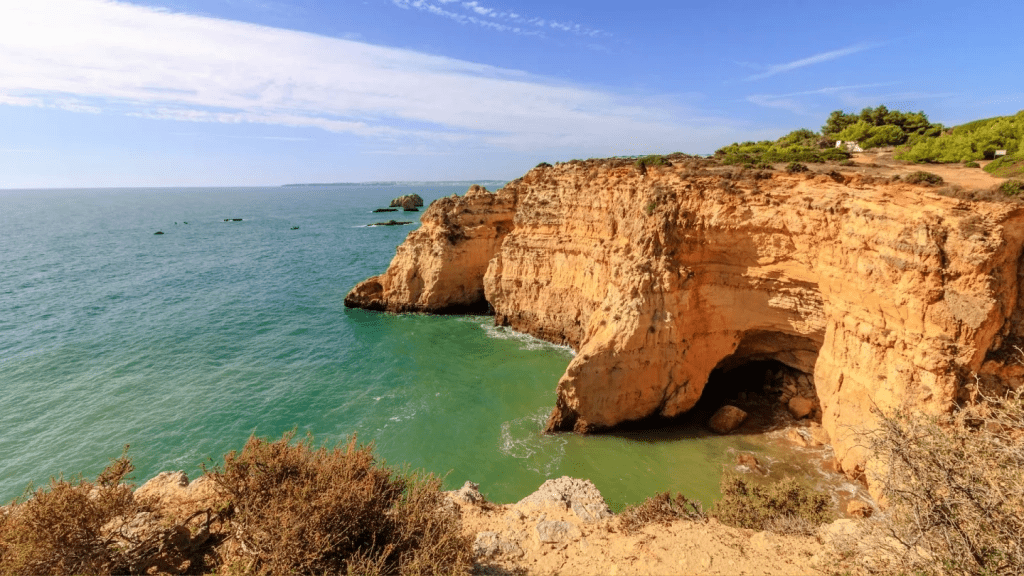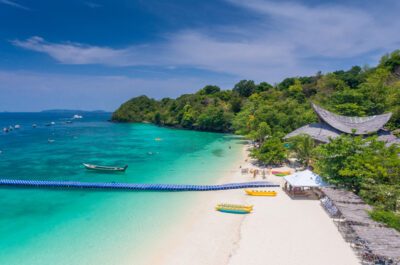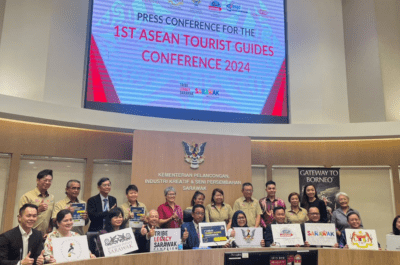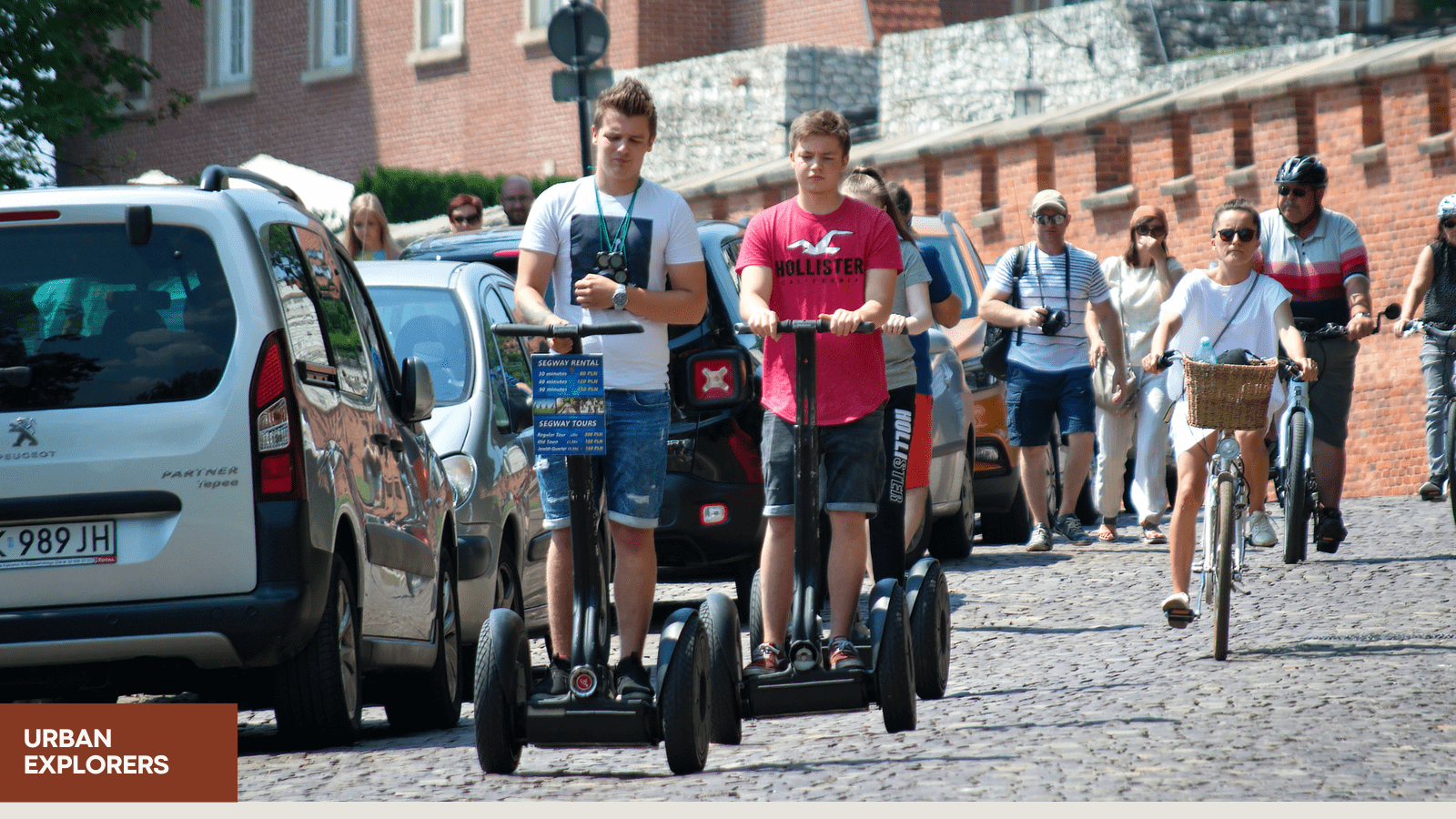Understanding destination pledges as tools for balancing tourism, this article explores how such initiatives regulate visitor capacity and promote responsible behavior to minimize environmental and cultural impacts.
This article is part of the Balanced Tourism column.
A growing number of destinations are adopting pledges to balance tourism, regulate visitor capacity, and promote responsible behavior by committing tourists to guidelines that minimize environmental and cultural impacts.
Understanding Destination Pledges

As tourism grows exponentially worldwide, the dual objectives of enhancing visitor experience and preserving the intrinsic qualities of destinations—be it their natural environment, cultural heritage, or local communities—have become increasingly crucial. Over-crowding, environmental degradation, and the erosion of cultural heritage are pressing concerns for destinations worldwide. To address these problems, a growing number of destinations are employing innovative strategy of implementing pledges to foster balanced tourism, regulate the carrying capacity of destinations, and drive responsible visitor behavior. Destination pledges are commitments made by tourists to adhere to specific guidelines aimed at minimizing their environmental and cultural impact. These pledges often include practices such as respecting wildlife, disposing of waste properly, and engaging with local culture in a respectful manner. These pledges invite visitors to commit to actions that support the sustainable development and preservation of a destination, fostering a mindset of responsible travel. The overarching goal is to create a sustainable interaction that benefits both the visitor and the host destination.
Though pledges vary in specific wording and focuses, they share some commonalities:
- Raising Awareness: Pledges educate visitors about the unique challenges and values of a destination.
- Promoting Stewardship: They outline actions travelers can take to minimize their impact and actively contribute to sustainability.
- Cultivating Shared Responsibility: Pledges emphasize that both visitors and tourism stakeholders play a role in protecting a destination.
Impact of Tourism Pledges
Studies indicate pledges can influence visitor behavior positively. They increase awareness and make individuals more likely to adopt sustainable behaviors. However, challenges exist, such as ensuring the pledge reaches a wide audience and translating awareness into action.
Detailed Case Studies
Finland: Sustainable Finland Pledge
This “Sustainable Finland Pledge” encourages visitors to act responsibly towards nature, respect local culture, and choose sustainable businesses.
- Innovative Practices: Focuses on everyday responsible choices and integration with local businesses bearing the “Sustainable Travel Finland” label. Promotes actions like respecting wildlife, reducing waste, and supporting local artisans – making sustainable choices accessible.
- Challenges: Maintaining engagement beyond initial signing and ensuring that the pledge influences decisions throughout a trip.
- Impact: Increased visibility of sustainable tourism options in Finland. Visitors report heightened awareness of their impact and motivation to act responsibly.
Iceland: Icelandic Pledge
Iceland introduced “The Icelandic Pledge” to address the rapid increase in tourism and its pressure on natural resources. Tourists are encouraged to sign an online pledge, promising to respect nature, travel safely, and leave no trace.
- Innovative Practices: Simple, memorable language focusing on core issues of off-road driving damage, safe travel, and waste disposal. Wide visibility through integration in arrival procedures.
- Challenges: The main challenge has been ensuring compliance, as the pledge is voluntary and lacks legal enforceability. Raising awareness and changing traveler behavior through education continues to be a hurdle, and ensuring deeper understanding rather than just symbolic signing.
- Impact: Despite challenges, the pledge has seen widespread adoption, with thousands of tourists committing to responsible travel. This has helped spread awareness and foster a culture of respect for Iceland’s fragile environments, and has reduced in some instances the irresponsible behavior, particularly off-road driving.
Palau: Palau Pledge
One of the most pioneering examples of this concept is the “Palau Pledge,” introduced by the island nation of Palau in the Pacific Ocean. Visitors to Palau are required to sign a pledge upon arrival, promising to act in an ecologically responsible way on the island. This pledge is not just a formality but is stamped into visitors’ passports and legally binds them to follow eco-friendly practices during their stay.
- Innovative Practices: Groundbreaking approach integrating pledge into immigration. High-profile with strong messaging through required viewing of an in-flight pledge video.
- Challenges: Ensuring the pledge translates into behavior change, not just entry compliance.
- Impact: Significant awareness-raising regarding Palau’s fragile ecosystem. Positive anecdotal examples of visitors altering behavior due to the pledge (e.g., being more conscious about sunscreen choice). Needs longer-term studies for concrete impact evaluation.
New Zealand: Tiaki Promise
New Zealand has adopted a similar approach with the “Tiaki Promise,” which encourages tourists to commit to protecting and preserving the environment. The promise covers aspects from driving safely and respecting all cultures to preserving nature and keeping the country clean. The initiative is supported by a comprehensive awareness campaign that educates tourists on the impact of their actions.
- Innovative Practices: Embodies the Māori concept of guardianship (kaitiakitanga). Encourages respect for land, people, and culture. Supported by informative resources.
- Challenges: Balancing universality of message with the need for culturally relevant actions.
- Impact: High recognition of the pledge. Positive correlation with visitors showing greater concern for the environment and greater likelihood to behave responsibly.
Hawaii: Pono Pledge
This sustainability-centered “Pono Pledge” covers ecological responsibility, respect for communities, and local economic support. Highlighting the concept of “pono” (balance), these pledges encourage responsible travel and conservation of Hawaiian natural and cultural resources.
- Innovative Practices: Rooted in the Hawaiian concept of balance. Emphasizes respectful interactions and active care for natural and cultural sites. Variant pledges for each island offer specificity.
- Challenges: Reaching visitors beyond organized tours who may not encounter the pledge.
- Impact: Increased awareness of “leave only footprints” principles. Encouraging visitors to engage in volunteer and conservation activities.
Haida Gwaii: Responsible Travel Pledge
Haida Gwaii, a pristine archipelago in British Columbia, Canada, has introduced the “Haida Gwaii Responsible Travel Pledge” to safeguard its unique environment and cultural heritage. The pledge urges visitors to commit to responsible behaviors that respect the local ecology, culture, and communities. Tourists are asked to travel lightly, leave no trace, and engage respectfully with both the natural environment and the Haida people who have lived on these islands for millennia. This initiative is part of a broader effort to promote sustainable tourism and includes extensive outreach to educate visitors on the pledge’s importance. The Haida Gwaii Responsible Travel Pledge exemplifies how targeted, culturally rooted pledges can foster a more sustainable interaction between tourists and destinations, ensuring that tourism benefits both visitors and the local community while preserving the natural and cultural environment.
- Innovative Practices:
- Emphasizes the Haida concept of “Yahguudang,” which translates to respect for all living things and the interdependence that binds us.
- Encourages visitors to participate in local cultural events and support local Haida businesses.
- Supported by a range of educational materials and local storytelling that deepens visitors’ understanding of Haida culture and environmental stewardship.
- Challenges:
- Ensuring all visitors are reached and understand the significance of the pledge, particularly those who may not engage with pre-visit educational materials.
- Balancing increased tourism with the preservation of natural resources and cultural integrity.
- Monitoring and enforcing the behaviors stipulated in the pledge in remote areas of the islands.
- Impact:
- Increased awareness among tourists of the ecological and cultural sensitivity of Haida Gwaii.
- Positive feedback from local communities and businesses regarding better-informed and more respectful visitors.
- Early signs of reduced ecological impact from tourism, though long-term data is still being gathered.
Aspen, Colorado, USA: Aspen Pledge
Aspen, Colorado has launched the “Aspen Pledge” to promote environmental stewardship and community respect among visitors and locals alike. The pledge asks participants to commit to protecting Aspen’s natural beauty, minimizing their carbon footprint, and supporting the local economy. This initiative is bolstered by a widespread campaign across the city’s tourist hotspots, where signage and digital media remind visitors of their commitment.
- Innovative Practices:
- Incorporates a comprehensive approach that combines environmental sustainability with economic and social responsibility.
- Utilizes local ambassadors and events to spread the pledge’s message effectively.
- Supported by a variety of digital platforms that provide educational content and interactive experiences.
- Challenges:
- Ensuring consistent participation from both tourists and local businesses in maintaining the pledge’s standards.
- Addressing seasonal population fluctuations which can strain resources and dilute the message.
- Impact:
- Increased awareness of sustainable practices among visitors.
- Improved community involvement in environmental programs.
- Enhanced reputation as a responsible tourism destination.
Bend, Oregon, USA: The Bend Pledge
The city of Bend in Oregon has introduced “The Bend Pledge,” which encourages tourists to respect the natural environment, the local community, and other visitors. The pledge highlights responsible trail use, waste reduction, and supporting local businesses. It’s supported by a local campaign that uses social media, local business partnerships, and educational materials distributed at key tourist entry points.
- Innovative Practices:
- Focuses on practical actions visitors can take to minimize their impact, such as using reusable water bottles and proper trail etiquette.
- Partners with local businesses to promote the pledge and offer incentives for participation.
- Challenges:
- Monitoring and ensuring adherence to the pledge, particularly in remote or less accessible areas.
- Overcoming visitor apathy towards environmental and community pledges.
- Impact:
- Positive local and visitor feedback on the initiative’s clarity and practical applications.
- Noticeable reduction in trail and habitat damage from increased responsible behavior.
Big Sur, California, USA: Big Sur Pledge
Big Sur, known for its stunning landscapes and coastal views, has implemented the “Big Sur Pledge” to protect its fragile environment from the effects of over-tourism. The pledge asks visitors to commit to not parking on roadways, staying on trails, and taking all trash with them. It is supported by collaboration between local businesses and conservation groups, which helps disseminate the pledge’s message and ensures visitor compliance.
- Innovative Practices:
- Adopts a targeted approach to specific issues such as littering and roadside parking.
- Engages directly with tourists through interactive signage and digital reminders.
- Challenges:
- Dealing with the vast number of visitors and effectively communicating the pledge to a diverse audience.
- Physical monitoring of compliance in vast and rugged terrain.
- Impact:
- Reduced roadside congestion and littering in key areas.
- Increased engagement from the tourism sector in promoting and upholding the pledge’s ideals.
Maria Island, Tasmania, Australia: Maria Island Pledge
Maria Island in Tasmania has established the “Maria Island Pledge,” urging visitors to respect the wildlife, especially the local wombat population, and to preserve the island’s natural and historical assets. The pledge is a part of visitor materials and signage throughout the island, emphasizing minimal impact tourism and the importance of not feeding or disturbing wildlife.
- Innovative Practices:
- Focuses specifically on wildlife interaction, particularly with the island’s famous wombats.
- Uses visually impactful signage and social media campaigns featuring the wildlife to spread its message.
- Challenges:
- Ensuring visitor compliance with wildlife interaction guidelines.
- Balancing tourism growth with the conservation of its natural and historical sites.
- Impact:
- Increased awareness and compliance regarding interactions with wildlife.
- Positive visitor engagement and feedback, contributing to a sustainable tourism model that could be replicated in similar environments.
Greenland: Our Pledge Towards Better Tourism

Greenland has introduced “Our Pledge Towards Better Tourism” which sets out five overarching themes: the importance of respecting and strengthening Greenland’s natural and cultural values, giving priority to local communities and businesses, and generating appealing opportunities in tourism for young people. Emphasized by Visit Greenland, the pledge serves as a mutual declaration for the future direction of tourism in Greenland, with the pledging entities committed to valuing and upholding these shared ideals. It aspires to ensure that tourism development benefits all of Greenland, embodying a collective set of values central to this vision.
- Innovative Practices:
- Focus on Youth and Local Businesses: Targets creating opportunities in tourism appealing to young people and prioritizes local communities and enterprises.
- Sustainable and Responsible Development: Aims at ensuring tourism develops in harmony with Greenland’s natural and cultural assets, supporting both preservation and growth.
- Challenges:
- Broad Stakeholder Engagement: Ensuring broad and effective engagement across a diverse array of stakeholders, from local businesses to international partners, poses a challenge.
- Implementation and Monitoring: Deploying the pledge effectively and monitoring its impact on both the community and the environment will require careful planning and resources.
- Impact:
- Shared Direction for Sustainable Tourism: The pledge marks a significant step forward in unifying the tourism sector under a common sustainable and responsible tourism development goal.
- Enhanced awareness and commitment: It raises awareness among businesses, locals, and visitors regarding the importance of preserving Greenland’s unique natural and cultural heritage while fostering tourism development.
Thompson Okanagan, British Columbia, Canada: 7 Generations Pledge
The Thompson Okanagan Tourism Association has launched the “7 Generations Pledge,” drawing on Indigenous principles that ask visitors to commit to sustainability and respect for the land, aiming to preserve it for seven generations to come. The initiative leverages digital platforms and local partnerships to educate tourists.
- Innovative Practices:
- Based on Indigenous concepts of long-term stewardship.
- Encourages travelers to engage with local Indigenous cultures.
- Challenges:
- Ensuring the pledge’s principles resonate and are actionable for international visitors.
- Impact:
- Heightened visitor awareness and engagement with Indigenous cultures and sustainability.
Sedona, Arizona, USA: Visit Sedona Pledge
Sedona has implemented the “Sedona Cares Pledge,” encouraging visitors to respect the natural environment, local community, and cultural heritage. Supported by educational outreach, it aims to maintain Sedona’s beauty and community well-being.
- Innovative Practices:
- Integration with Sedona’s Sustainable Tourism Plan.
- Community-driven development of the pledge.
- Challenges:
- Adapting tourism practices to a growing demand without compromising sustainability.
- Impact:
- Improved sustainability practices among visitors and heightened awareness of local efforts.
Costa Rica: Pura Vida Pledge
Costa Rica promotes sustainable tourism through the “Pura Vida Pledge,” which ties into the country’s broader commitment to environmental preservation and social progress. The pledge is communicated through various media and encourages tourists to participate actively in conservation efforts.
- Innovative Practices:
- Aligns with national policies on sustainability and eco-tourism.
- Encourages active visitor participation in conservation activities.
- Challenges:
- Balancing the economic benefits of tourism with the pledge’s sustainability goals.
- Impact:
- Enhanced protection of biodiversity and promotion of eco-tourism experiences.
Travel Better Pledge by Sustainable Travel International
A universal pledge encouraging travelers to make positive impacts on their destinations, and provides a general framework applicable globally, supporting sustainable practices worldwide.
Issue-Specific Pledges
Addressing specific concerns, these pledges ask travelers to take targeted actions:
- Child Safe Traveler Pledge: Combatting child exploitation in tourism.
- Flight Free Pledge: Encouraging alternative modes of travel to reduce aviation carbon footprint.
- Travellers Against Plastic Pledge: Promoting reduction of single-use plastics.
- World Animal Protection Pledge: Focused on ethical animal encounters in tourism.
Best Practices and Overcoming Challenges
To maximize effectiveness, tourism pledges should:
- Be collaborative: Developed with input from locals, businesses, and policymakers.
- Be widely promoted: Integrated into pre-arrival marketing campaigns, visitor centers, and travel websites.
- Offer guidance: Provide concrete actions and local recommendations for sustainable behavior.
- Include monitoring and evaluation: Measure the pledge’s impact and adapt as needed.
The Future of Tourism Pledges
The evolution of tourism pledges reflects a growing understanding that the future of the industry depends on a collaborative, balanced approach. While pledges alone won’t solve every issue, they play a vital role in:
- Changing the Narrative: Shifting focus from volume tourism towards responsible travel and high-yield tourism.
- Empowering travelers: Giving visitors the tools and knowledge to become mindful stewards of the places they visit.
- Inspiring innovation: Driving sustainable solutions in destinations.
Tourism pledges embody a powerful shift in mindset. They represent a commitment to creating a tourism industry that respects the planet, its people, and precious cultural heritage for generations to come. Their continued evolution, combined with evolving concepts like “apply to visit”, hold the potential to revolutionize how we travel, ensuring destinations thrive, not merely survive, the popularity they’ve achieved.
Managing Tourism Pressure: Innovative Destinations
- Venice, Italy: Introducing an entrance fee for day-trippers to control crowds, along with real-time monitoring systems for tourist flows.
- Machu Picchu, Peru: Strict timed entry limits and mandatory guiding on trails reduce impact on the ancient citadel and its surroundings.
- Dubrovnik, Croatia: Diversifying attractions beyond the Old City walls, partnering with cruise lines to manage passenger arrivals, and promoting experiences in surrounding regions.
- Amsterdam, Netherlands: Proactive policies tackling overtourism in the red light district, limiting vacation rentals, and redirecting visitors to lesser-known neighborhoods and nearby cities.
The Next Frontier: ‘Apply to Visit’ Schemes

Building on the success of these pledges, a new, more controlled approach is emerging: the “apply to visit” concept, to regulate tourism flows.. This method involves a more stringent process where potential visitors must apply for permission to visit certain sensitive destinations. This can be seen as an extension of the pledge system, adding an extra layer of selectivity to ensure that only those truly committed to sustainability are granted access.
Some destinations are considering the concept of “apply to visit” to regulate tourism flows. Applicants would demonstrate their commitment to sustainability principles and potentially undergo an assessment. Examples of destinations exploring this model include:
1. Bhutan’s Controlled Tourism Model
Bhutan presents a unique case where tourists must apply to visit through a process that includes obtaining a visa tied to a daily fee that directly contributes to the country’s environmental and cultural conservation efforts. This model regulates tourist numbers and ensures that tourism has a positive impact on the country.
2. Galápagos Islands’ Restricted Entry
The Galápagos Islands have also implemented an application process for visitors, aimed at protecting its unique biodiversity. Tourists must apply for a Transit Control Card and are subject to strict regulations about where they can visit and what activities they can engage in during their stay.
3. The Lord Howe Island Visitor Cap
Lord Howe Island in Australia limits the number of tourists to 400 at any time. Visitors must apply and plan their trip in advance, significantly reducing the environmental impact on this UNESCO World Heritage site. The cap creates high demand, making it difficult for potential visitors to secure a spot. This could potentially limit the economic benefits of tourism. The controlled number of visitors has helped preserve the island’s unique biodiversity and natural beauty, ensuring that tourism remains sustainable and beneficial to the local community.
4. Antarctica’s Visitor Regulations
Given its fragile environment, Antarctica has strict regulations enforced by the International Association of Antarctica Tour Operators (IAATO). Visitors must adhere to guidelines that limit their impact on the pristine ecosystem. The remote and harsh environment of Antarctica makes it difficult to monitor and enforce these regulations consistently. These regulations have been successful in minimizing environmental damage and ensuring that tourist activities do not disrupt wildlife.
Which Destinations Might Benefit from ‘Apply to Visit’
This model is best suited to destinations facing extreme pressures from overtourism:
- Fragile ecosystems: Islands, wilderness areas, areas with high biodiversity.
- Places with limited infrastructure: Destinations struggling with waste management, water scarcity, or transport capacity issues.
- Culturally sensitive sites: Destinations where large visitor numbers threaten traditional ways of life or heritage preservation.
Pros and Cons of ‘Apply to Visit’
- Potential Benefits: Stricter control over visitor numbers, enhanced protection of sensitive environments, promotion of quality tourism aligned with sustainability goals.
- Potential Drawbacks: Could be perceived as elitist or exclusionary, risk of deterring genuine ecotourists, challenges of fair and transparent implementation.
Addressing ‘Apply to Visit’
The “apply to visit” model remains controversial. To mitigate negative impacts, destinations must:
- Focus on Inclusivity: Find ways to ensure affordability and accessibility for responsible visitors of diverse backgrounds.
- Emphasize Education: Pair the application process with resources that promote sustainable travel principles widely.
- Maintain Transparency: Clearly communicate assessment criteria and decision-making processes.
- Prioritize Community Benefits: Ensure that any additional fees or restrictions directly support conservation, infrastructure, and local communities.
The implementation of destination pledges, combined with an apply-to-visit model, represents a bold step towards sustainable tourism and a proactive approach to managing tourism sustainably. These initiatives not only help regulate the flow and behavior of tourists but also serve as a tool for conservation and cultural preservation. These initiatives face challenges, particularly in enforcement and compliance. However, their positive impacts on environmental preservation, cultural respect, and sustainable community development are significant. They serve as vital tools in ensuring that tourism remains a source of enjoyment and enlightenment without compromising the very attractions it seeks to promote, and that tourism contributes positively to both the economy and the ecosystem of host destinations.
With over 30 years of global travel and tourism expertise, Dr. Jens Thraenhart is the Founding Partner of 25-year-old bespoke strategy consulting firm Chameleon Strategies, the 2nd Vice Chair of the World Tourism Organization’s UNWTO Affiliate Members, the former Chief Executive Officer of the Barbados Tourism Marketing, Inc. (Visit Barbados), the former Executive Director of the Mekong Tourism Coordinating Office, the founder of private-sector-led tourism marketing organization Destination Mekong, and former Board Member of the Caribbean Tourism Organization (CTO).
Previously active in China, in 2009, he co-founded acclaimed marketing agency Dragon Trail and published the China Travel Trends books and website. Jens has also held leadership positions with Destination Canada and Fairmont Hotels & Resorts (now Accor).
As founder of the Destination Film Forum, he is also a big proponent of the power of storytelling, having been recognized as one of the top 10 Most Influential Leaders in Travel in 2022 by Travel Vertical, ranking first in the category of Creativity and Brand Storytelling, and served on the Jury of the Cannes Lion International Film Awards.
Other recognitions for his work include being one of the travel industry’s top 100 rising stars by Travel Agent Magazine in 2003, one of HSMAI’s 25 Most Extraordinary Sales and Marketing Minds in Hospitality and Travel in 2004 and 2005, one of the Top 20 Extraordinary Minds in European Travel and Hospitality in 2014, and honored as one of the Global Travel Heroes in 2021.
He completed his Doctor in Tourism Management at The Hong Kong Polytechnic University and graduated from Cornell University with a Masters in Hospitality Management.
He publishes his three tourism industry blogs: (1) Tourism-Campaigns.com; (2) BalancedTourism.com; (3) PurposePicks.com.




























































